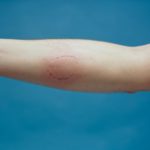
Forensic odontologists are highly experienced, specially trained dentists who use their expertise to help identify unknown remains and trace bite marks to a specific individual. The forensic odontologist may be called in to do so by police officers, the medical examiner or the coroner.
In death cases, the forensic odontologist attends the autopsy and takes photographs, cranial measurements, dental impressions and x-rays from the remains. These samples are then compared to those of known missing individuals. If a match can be made, the remains can be identified.
In cases where bite marks are found on the body of a victim or suspected perpetrator, or on food, chewing gum or another item, the forensic odontologist uses the same procedure to try to determine or exclude potential sources of the bite marks.
The forensic odontologist then writes a detailed report explaining what was done and what conclusions can be made and he or she must be prepared to explain the process and justify the findings in court.
Also called forensic dentists, forensic odontologists are typically called in to:
- Identify human remains that cannot be identified using face recognition, fingerprints or other means
- Identify bodies in mass fatalities, such as plane crashes and natural disasters
- Determine the source of bite mark injuries, in cases of assault or suspected abuse
- Estimate the age of skeletal remains
- Testify in cases of dental malpractice
Working Conditions
Forensic odontologists usually work as regular dentists much of the time, performing forensic examinations as needed at the request of local law enforcement or the medical examiner.
In death cases, the forensic odontologist may go to the crime or disaster scene. Otherwise, the measurements and x-rays are taken as part of the autopsy.
Since crimes and disasters can happen at any time, a forensic odontologist “on call” must be ready to work long hours, day or night, on holidays and on weekends.
The work is highly detailed, demands extremely fine motor skills and requires extraordinary precision and accuracy. Complex equipment, including computers, microscopes and other technologies, may be used in the identification process.
Forensic odontology requires attention to detail and the ability to work patiently to complete a lengthy process step by step without rushing. The forensic odontologist must be able to make conclusions based solely on the physical evidence available.
The forensic odontologist must keep accurate and complete records.
Such close involvement with the investigation of crimes and mass disasters can be emotionally disturbing.
Academic Requirements
A forensic odontologist must first earn a Doctor of Dental Science (DDS) or Doctor of Dental Medicine (DMD) degree to become a dentist. Extensive additional training is required in the techniques and methods of forensic odontology, along with hands-on experience, often by shadowing a more senior professional.
To become board certified by the American Board of Forensic Odontology of the American Academy of Forensic Sciences, the forensic odontologist must work 25 cases, accumulate 350 qualification points by attending meetings and other professional development programs and pass a qualifying exam.
Resources
- American Academy of Forensic Sciences
- American Board of Forensic Odontology
- American Society of Forensic Odontology
